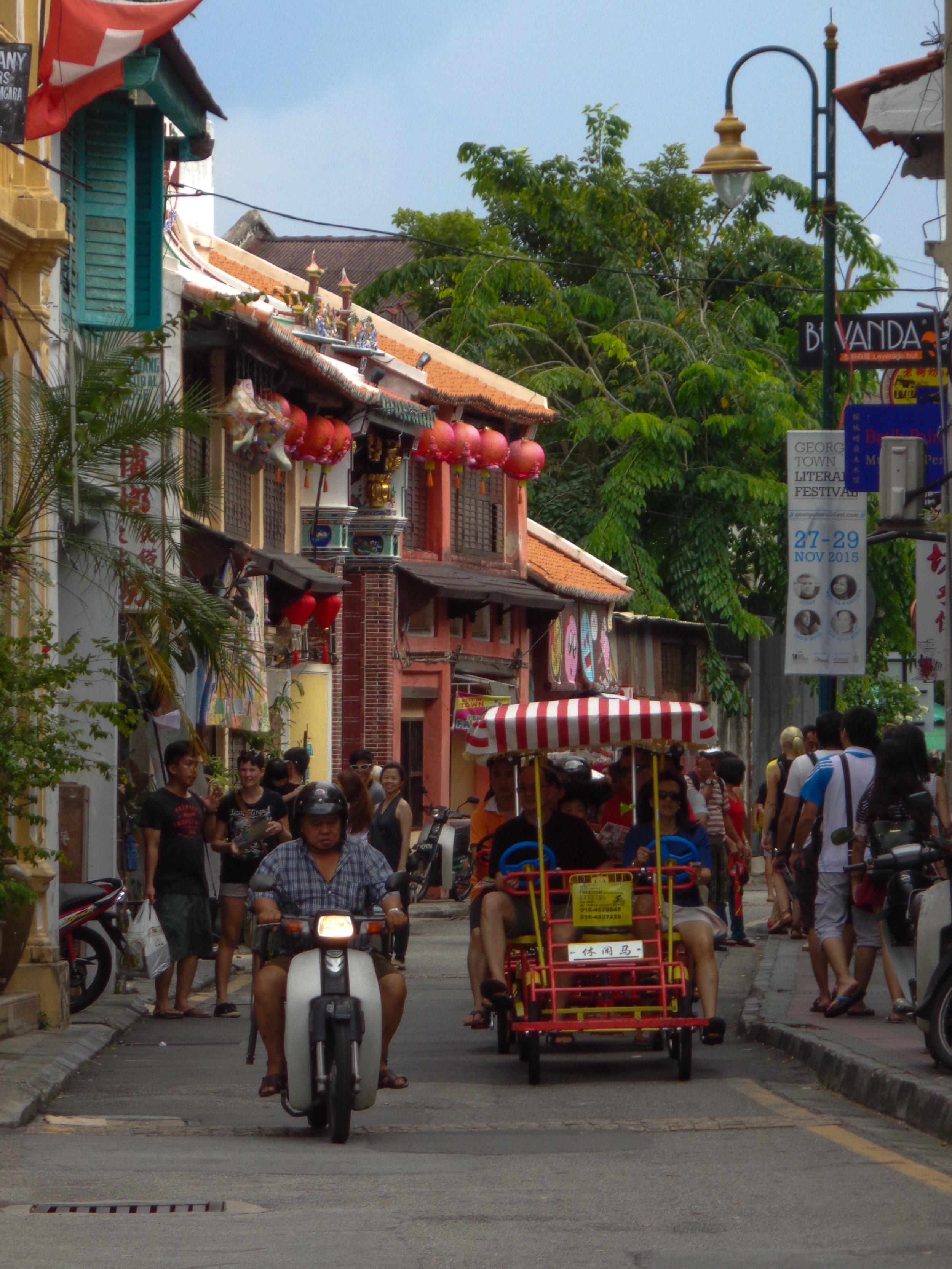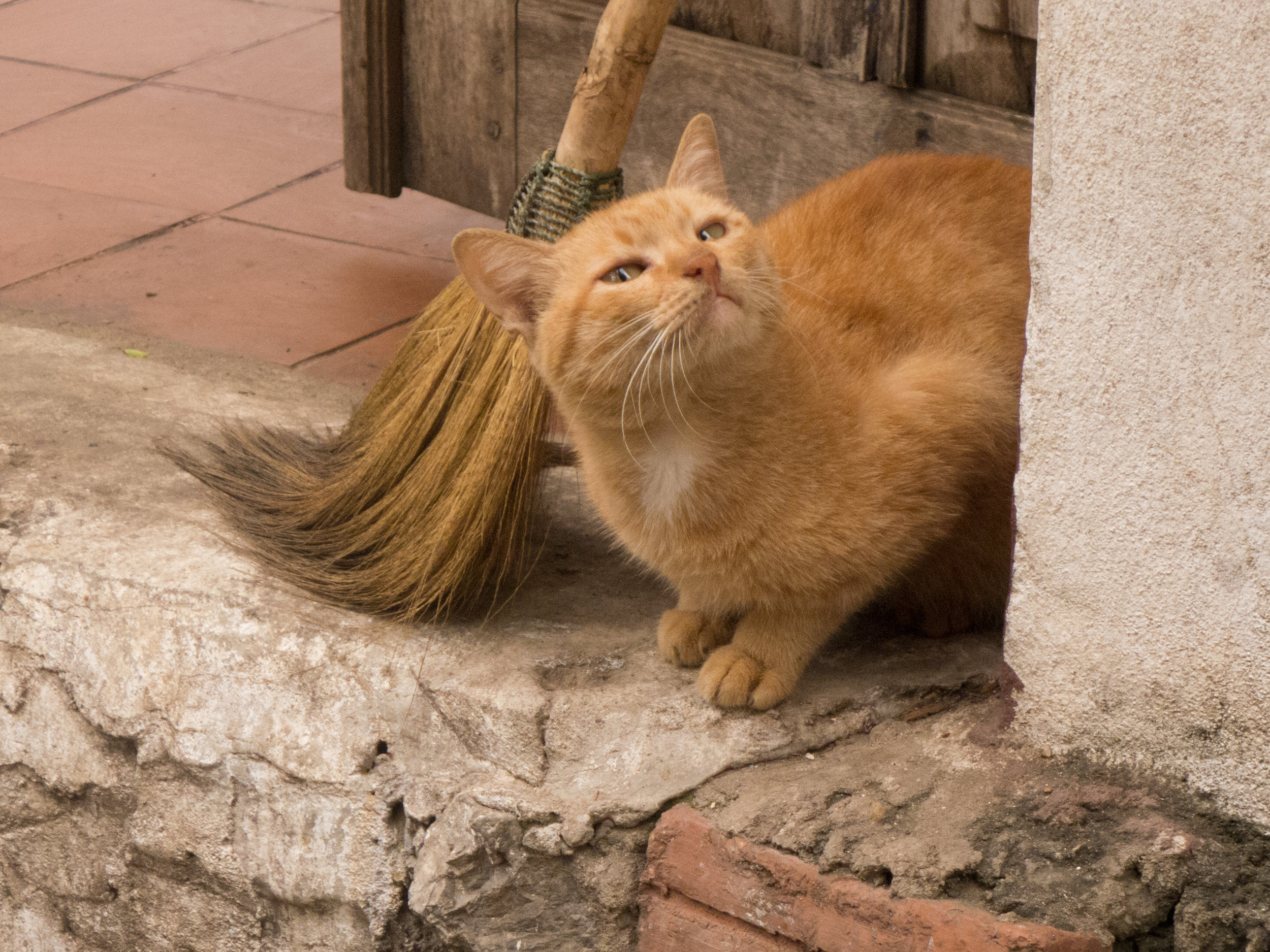Currying F(l)avor in Penang
I didn’t plan on going to Malaysia. But I had dear friends who made the move there, so it made sense to check it out since I was in the neighborhood, so to speak. A couple of years ago, they gave up on the American way of life, sold their businesses and moved to the island of Penang, in northwest Malaysia, close to the border with Thailand. Multicultural Penang has a great food culture, provides easy access to Southeast Asia, and an economy that would support building a business when they were ready. Most importantly, they’d get more for their money, like a beautiful 2-bedroom apartment with a balcony and an ocean view, for $600 USD/month.
Batu Ferrenghi, Penang, Malaysia
Penang is proud of the fact that Chinese, Indian, and Malay people all live side by side. Chinese make up the largest ethnic group, speaking Cantonese and Hakka, but Malay is the fundamental language and the dominant culture. Malays are Muslim, but other cultures observe their own traditions - Christian, Buddhist, Hindu. As a resident of Queens, NY, the most diverse place on the planet, it makes me happy when people live in harmony, especially after reconciling some unpleasant history. (Wikipedia can tell you more about that.)
All that diversity makes Malaysia seem tolerant and inclusive, but under the surface, there's a particular order to things. The hierarchy in Malaysian society gives the advantage in property ownership, legal rights and such always to the Malay. And there are still social restrictions. Marriages between Malay people and non-Malays are not always well-received. Homosexuality is technically illegal, and anyone found disseminating non-Islamic materials, or preaching non-Islamic doctrine with the intention of converting Muslims may be arrested and imprisoned. Thankfully, there were no dress restrictions, just stay within reasonable bounds of modesty. I could sweat unabated. Hooray.
George Town, Penang, Malaysia
Since there was no danger of me proselytizing, I let my friends show me around Penang - beaches, mountains, art, history - but first, food. That's the main attraction. The hanger stalls are the best way to experience Penang’s mix of cuisines. Order as many dishes from any of many stands, each vendor with a specialty. The best chicken satay. The best seafood. The best of That Noodle Dish. We visited a few during my stay, the first one just after I arrived. We entered through a dark, wet alley into a massive open-air dining area, complete with a circular platform in the center of the room with a few bedazzled singers performing to a taped recordings of Chinese pop songs.one for breakfast, with lots of noodles and broths. Another by the ocean, where a torrential downpour blew rain sideways across the tables, and the tarp roof leaked in spots, but whoever could find a dry-ish seat stayed to keep eating.
Hawker Stalls
You're usually eating outside or open-air, so it's too hot to eat in the middle of the day. My meals included breakfast and dinner, with heat exhaustion in between. At a morning-only hawker stall at 7 am, traditional breakfast noodle soup. Dim sum in a huge open room of at least 100 picnic tables. And amazing roadside roti canai - fresh indian flatbread, made on a skillet in front of you, like a crepe, with curry chicken, or curry something. Spicy, and freaking yummy.
There is a modern Penang, with sparkling new hotels and skyscrapers, but most of the time we steered towards George Town for any hustle and bustle. George Town has the architectural charm of a former colonial outpost, now dilapidated in the wake of Japanese invasion in WWII, when the British turned tail and ran. Enormous colonial mansions lie abandoned and decrepit, with trees growing right through the roof. The art scene is growing in Penang. George Town’s street art is a point of pride – you can even buy souvenirs with the images. Some are fun and funny, some offer social commentary, some rely on optical illusion. I didn’t see anything I’d recognize as political.
For more photos of Penang, Malaysia, click here.
The biggest surprise to me was their enthusiasm for hiking. There are at least 30 hiking trails (I heard as many as 100, but couldn’t verify) in the mountains that fill the center of the small island. My friend’s husband took me on a thrilling moto ride up the winding hills to the Penang Botanical Gardens to go on one of his favorite, more challenging hikes. Understatement. It was so steep so that the only way ascent in this thick jungle was even possible was by using a rope embedded in the hillside, so you’re basically scaling the mountain. As my hair started to soak through with sweat, my friend told me that it’s not unusual to meet a king cobra. Happily, they were otherwise occupied during our hike. We did hear a pack of wild boar run off, and saw a broad patch of upturned dirt where they’d been rooting around, but no sightings unfortunately. Of course, I say that, and then wonder what exactly I would do confronted with a wild boar. Introduce myself?
All that hiking takes a toll on your tootsies, so after dinner one night, the three of us went for a foot massage. Around 11 pm, we walked into the brightest reception area, with the maroonest decor and the brassiest accents, to an all-Chinese, non-English speaking staff, standing ready to administer to walk-ins, 24/7. Three Shanghai pedicures, they say. I'm going along with it. We're hushed back to a changing area, then into a dark room full of overstuffed pleather salon recliners. On a huge screen, Chinese soap operas play. A thin man, dressed in black, sits on a small low stool in front of each of us, a selection of scalpels, knives and files by his side. For the next hour, the attendants hack and file away at our feet. It's an acquired taste, but the results are unbelievable. New feet, like they'd never walked a day. Cleopatra feet. I've looked for the service in New York. Nothing legit - maybe there's something underground, whatever that means. Hygiene or homicide could be the concerns.






















































